In the culinary world, where profit margins dance on the edge, effective revenue management is essential if you want your restaurant to be financially viable and profitable.
It is all about realizing where you can boost profits. But to understand areas where you can do that, you need a strategy.
Now, there are several restaurant revenue management strategies out there, but none of them are one-size-fits-all.
Luckily, you can create your own strategy that will fit your restaurant's needs. And the key tool for this task is nothing else but data.
Today, we will show you what kind of data we have in mind, where to find it and what steps to take in order to create your own revenue management strategy.
Let's dive in.
Step 1: Collect Data
Deciding to level up your restaurant revenue management game is a smart move.
The first step to kick off your strategy is clear—collect data.
Why? Because your restaurant's data holds the key to understanding your customers' preferences, favored dining times, popular dishes, and unique eating patterns.
Once you dive into this data, you'll pinpoint the direction for your revenue management strategy.
So, where do you get this treasure trove of information?
Chances are, you've got a point-of-sale (POS) system humming in your restaurant.
According to Toast's Restaurant Industry Outlook Report, a whopping 82% of restaurants are onboard with POS systems, so you might be in that club too.
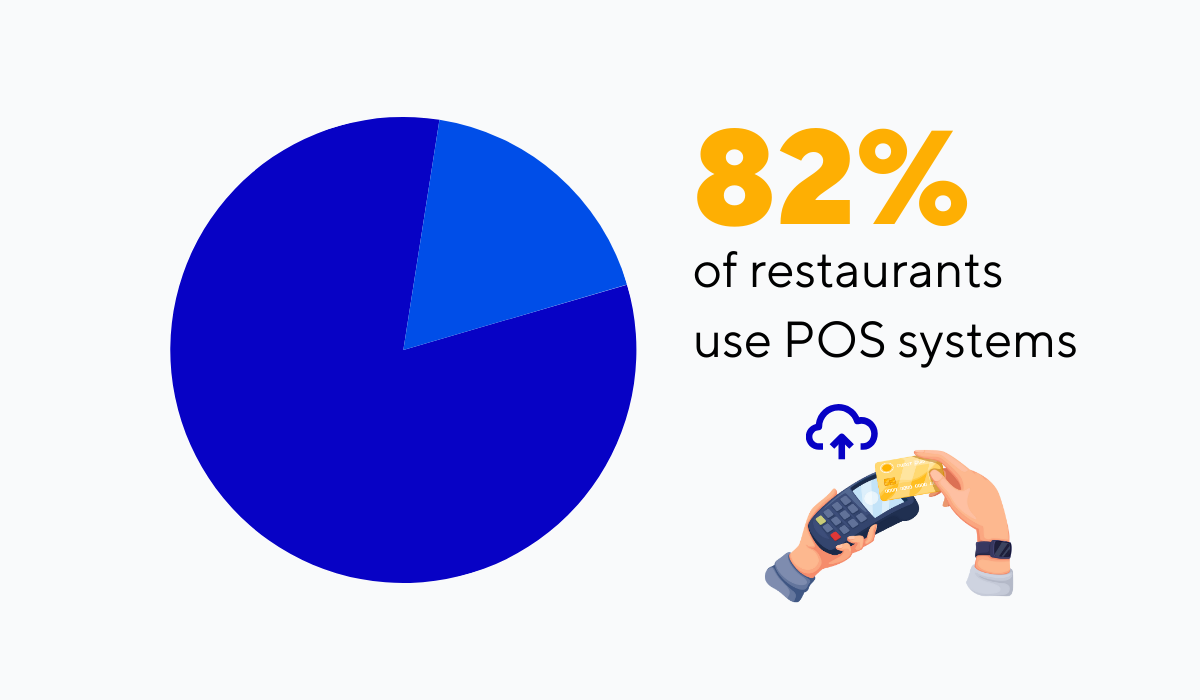
Illustration: Tablein / Data: Toast
Your POS, with its transaction details, customer preferences, and peak hours, is a goldmine of data.
And if you've integrated other tools with POS, like restaurant reservation software, you've got even more insights at your fingertips.
Take, for example, our own restaurant reservation software, Tablein.
This tool will give you data on reservation frequency, peak reservation times, popular days, and even spillage on cancellations.
It's not just about the dates and times, though. Tablein keeps tabs on your patrons, too. It knows your loyal diners, their wishes and preferences.
All this information will come in handy in strategizing how to increase revenue, reduce expenses where necessary, and improve your patrons' experience—which also boosts profits.
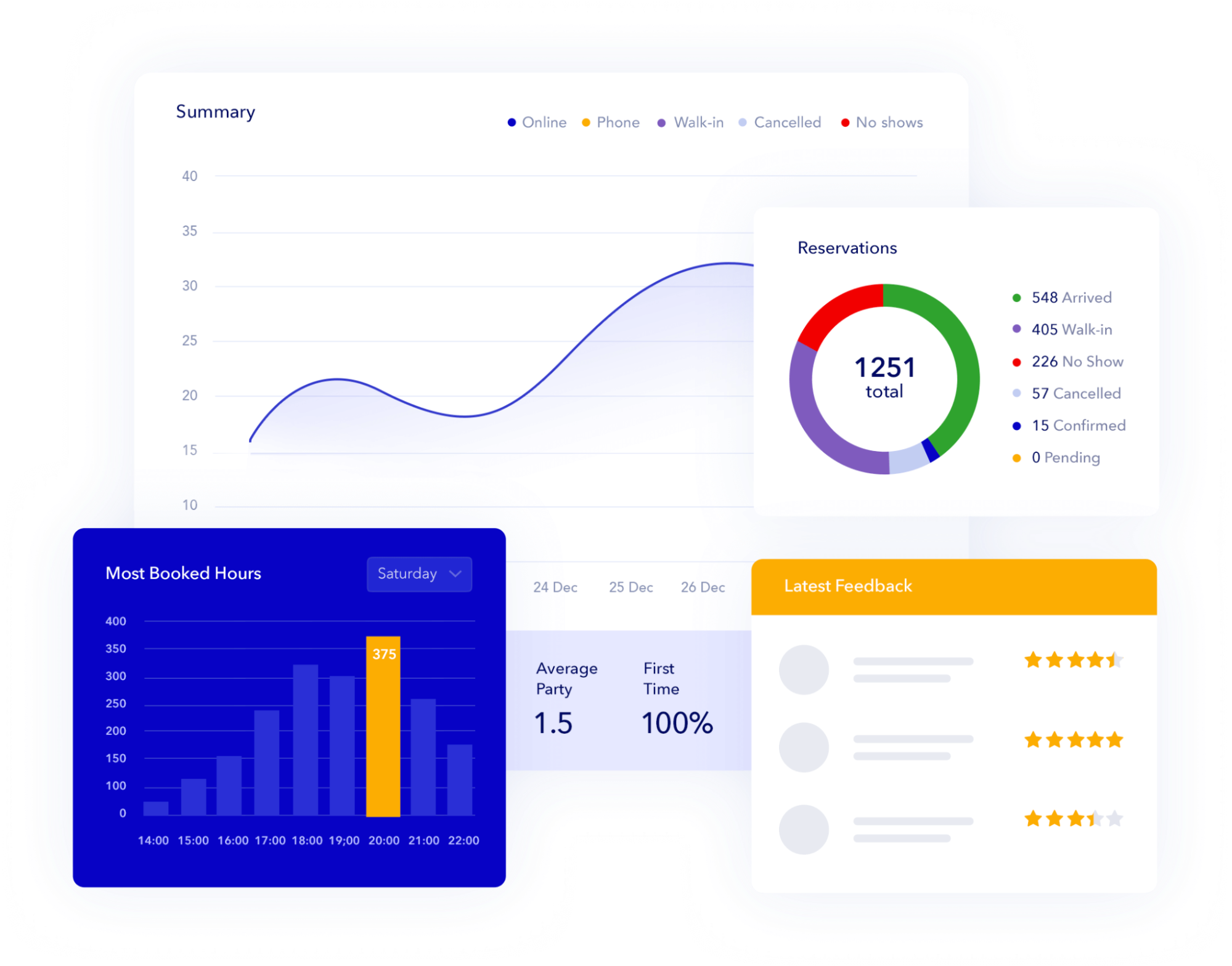
Source: Tablein
You can learn about your customers' experiences, preferences and expectations in one more way. Through customer surveys, online reviews, and feedback forms.
Tablein steps in here, too, sending a feedback request the day after a customer's visit. This polite nudge lets them rate the food, service, ambience, and cleanliness on a sleek 1 to 10 scale, and leave a comment.
Can you just imagine all the potential of this direct feedback for finding ways to improve your customer experience and, with it, boost your profits? We sure can.
So, armed with data from your trusty POS, reservation software, and customer feedback, you've got a goldmine dataset for shaping your revenue management strategy.
Now, it's time to analyze this data!
Step 2: Analyze Historical Data
This step involves analyzing the data you have collected to uncover patterns and dining habits in your eatery:
- Find out which menu items were popular and which were underperforming.
- Discover which menu items were frequently ordered at certain times of the day or even of the week, month, or year.
- Identify dishes with high and low-profit margins.
- Evaluate which promotions drove higher customer engagement and spending.
The insights from these revelations will help you better shape your pricing, promotions, and staffing strategy.
Searching through old data isn't a shot in the dark, as many would say.
Instead, see it as a strategic move that will help you make better decisions based on thoroughly examining your restaurant's journey through time.
After all, who better to narrate your restaurant's performance than your own data?
Now, how do you go about this analysis? You have two options.
One practical approach is leveraging data analysis software, especially software that uses charts and graphs to illustrate trends over time.
Below is one such data visualization of an overall snapshot of a restaurant performance done with Aptitive and Microsoft Power BI.

Source: Aptitive
As you can see, it's much more effective and easy to read than plain numbers or lines of text!
But if delving into data software feels like uncharted territory, there's another way.
You can consider working with professionals versed in data analytics.
These individuals will bring a refined skill set to the table, likely discovering many more patterns through a comprehensive examination of your historical data.
After all, they're trained for it.
So, as you embark on this analytical journey—whether on your own or with the help of data experts—keep an eye out for patterns that might influence customer behavior and spending.
Seasonality, for instance, could be one of them.
Step 3: Detect Seasonal Trends
When you diligently analyze your historical data, and sales data in particular, you will soon notice seasonal patterns.
This is one step that you should consider closely when creating your revenue management strategy.
Why, you wonder?
It's about discerning the natural ebb and flow of your business and your customers' tastes throughout the year.
During the summer, they might lean towards refreshing salads, while the cozy embrace of winter prompts a shift towards hearty soups and warm comfort foods.
That also means some menu items and ingredients will be in high demand while some will be in low demand, depending on the season.
When you understand these trends and changes in seasonal preferences, you can adjust your menus, pricing and even inventory levels.
Moreover, you can create promotional strategies according to seasonal demands.
All these are ways to enhance your restaurant's revenue and should be part of your revenue management strategy.
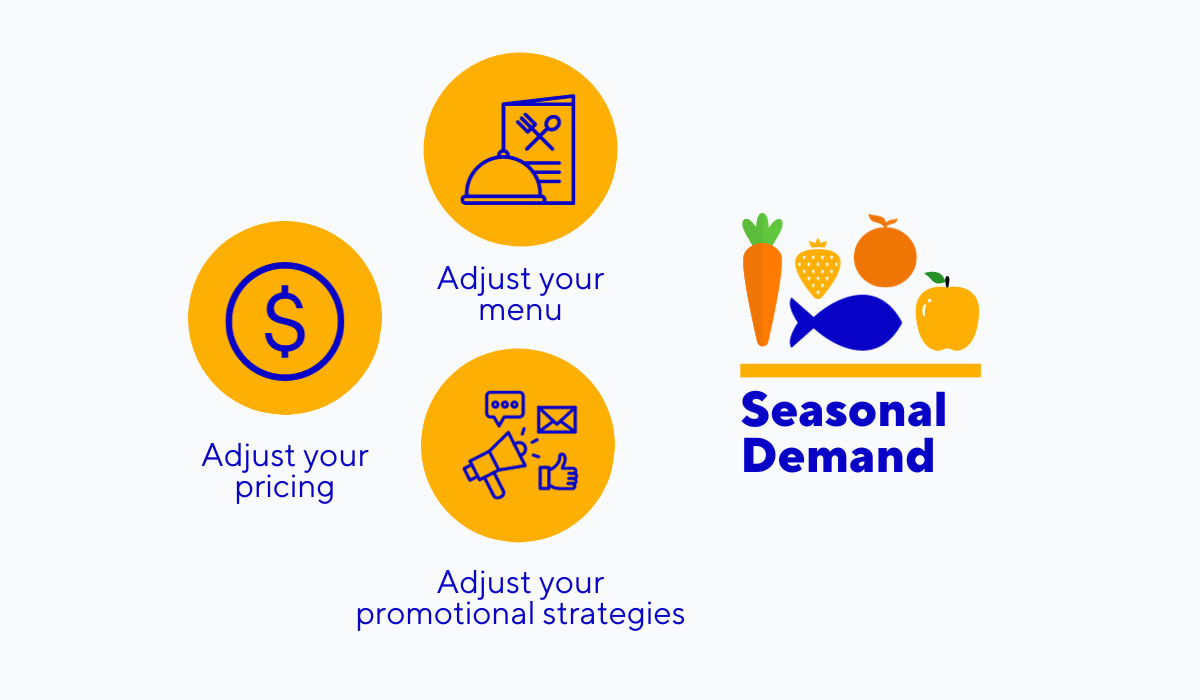
Source: Tablein
Let's look at one hypothetical example.
Suppose your analysis reveals a consistent spike in demand for crisp salads during the summer months.
In response, you can strategically adjust your menu to offer an even wider variety of refreshing salads, introducing enticing combinations of seasonal fruits and vegetables.
Data may also reveal a shift in customer preferences towards heartier fare during winter months.
In that case, your updated menu could feature a steaming bowl of butternut squash soup or a comforting stew.
What about pricing?
Just as your menu adapts to the seasons, so should your pricing strategy. After all, ingredient prices change due to availability, and most customers understand this.
Luckily, our aforementioned salads tend to be high-profit food items, as Chef Giuriati says:
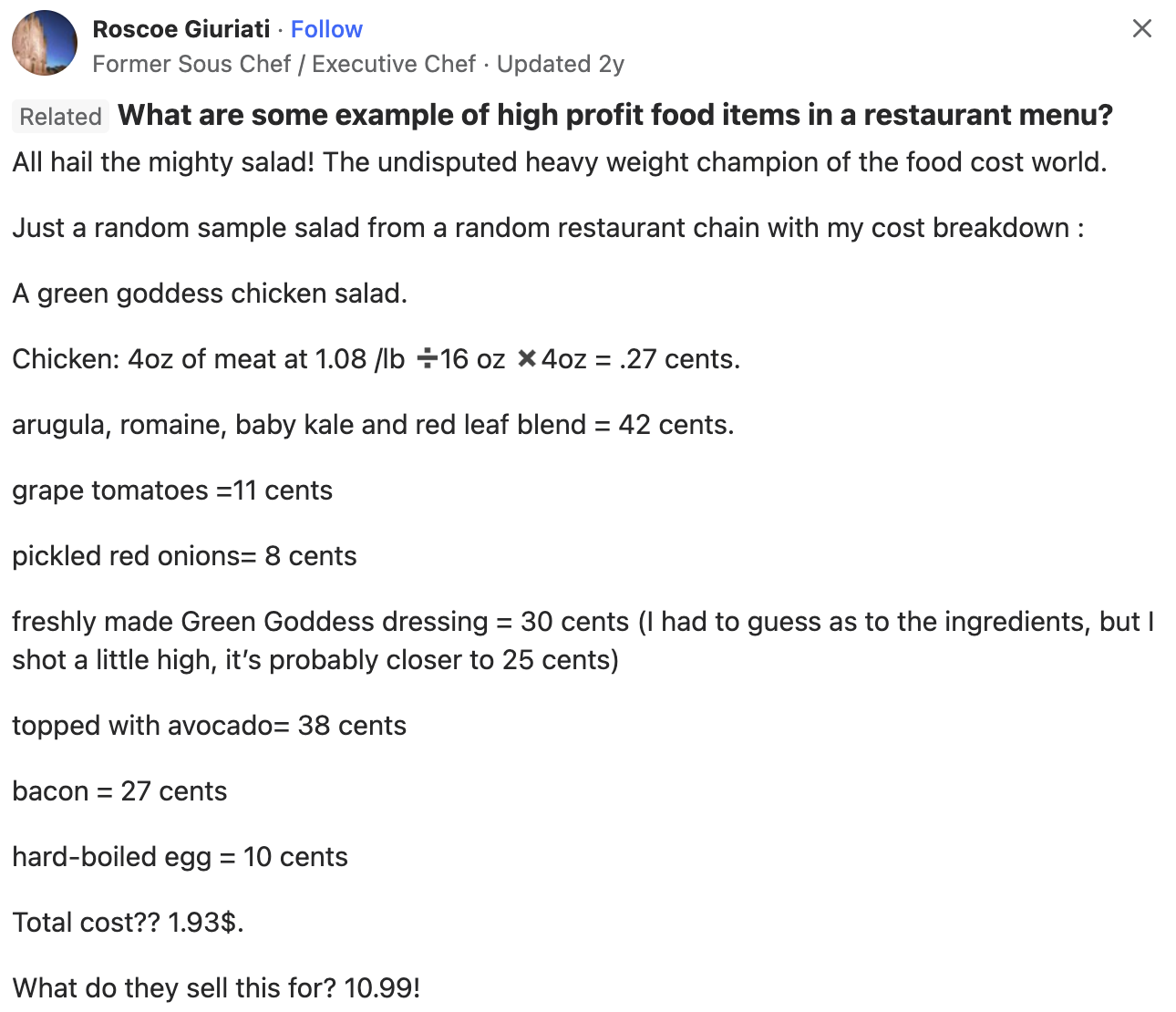
Source: Quora
However, changing prices is something you should be transparent about with your diners.
To avoid disturbing your patrons too much with price changes, you can offer different special offers to entice customers, increase your sales, and boost profits.
In essence, this step involves not merely observing but acting upon the detected seasonal trends.
Adjusting your menu, pricing, and promotional strategies based on this data will directly impact your restaurant's bottom line and should, therefore, be part of your revenue management strategy.
Step 4: Analyze the Market Trends
In crafting your revenue management strategy, analyzing current and market trends and keeping an eye on future predictions is as important as analyzing your past data.
These trends range from consumer preferences, dining habits, and popular menu items, all the way to marketing and technology trends.
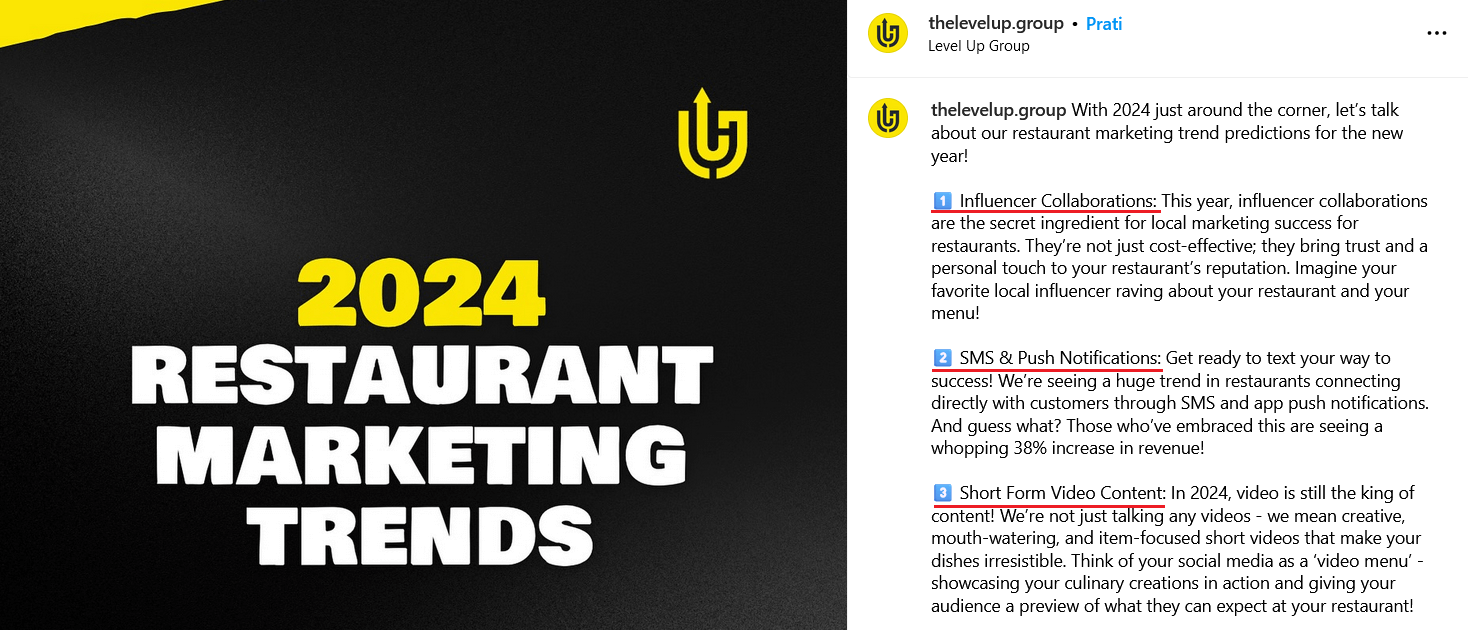
Source: The Level Up Group on Instagram
Being aware of these trends and embracing them in your restaurant will bring you many benefits:
- It helps you stay competitive
- Attracts more customers
- Enhances customer experience
- Gives room for creativity
- Boosts your revenue
Some of the most relevant sources you should pay attention to are National Restaurant Association reports, reports by Yelp, TouchBistro, and Toast.
But arguably, an even better approach is to use online resources and social media channels.

Source: Tablein
Observing what customers do and comment on social media, what kind of food they eat (and post on social media), and which restaurants they frequent are all ways you can learn about what is in trend in the restaurant industry.
After all, it is the customers that define what is popular, and if you want to attract them, you have to monitor what they like!
The smart way to do it is by using social media listening tools.
With these tools, you can actively monitor who mentions your brand, in what sentiment, and what customers generally think and feel about their dining experiences. All in real-time.
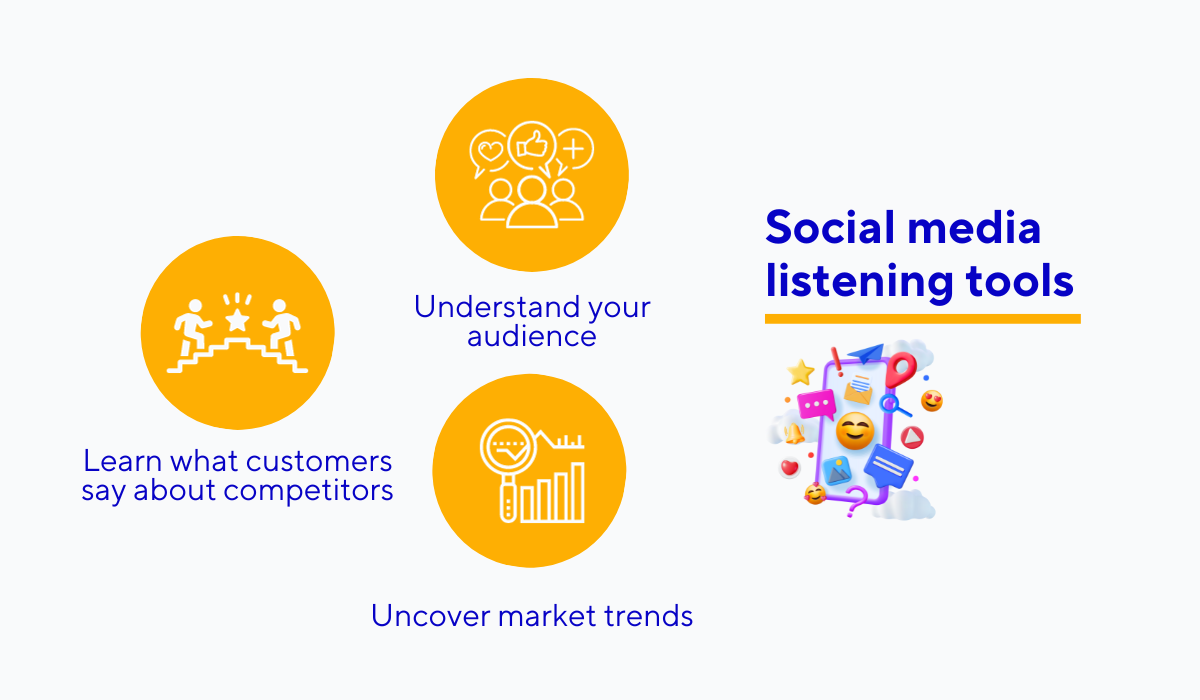
Source: Tablein
You can, for instance, learn about what features you are missing in your restaurant that your competitors have, if customers are satisfied with the billing process, if you should change it, and more.
All in all, you can learn valuable and precise information about restaurant trends and customer expectations.
Social media is also a playground for many industry influencers, so following what they have to say is another smart move to learn more about current trends.
To conclude, current market trend analysis is necessary to stay in the loop about what is popular among customers and the restaurant industry.
So, make sure to regularly read industry reports and leverage social media listening tools!
Step 5: Research Your Competitors
Last but not least, let's unravel the final step in shaping your revenue management strategy—analyzing how your competitors do it.
Ever heard the saying, "The grass is greener on the other side"?
Well, if that’s your outlook on your competitors, it's time to explore why they have it better, and then use those insights to create a better business for yourself.
Here's your guide to conducting a savvy competitor analysis, ensuring your business stands out in the market.
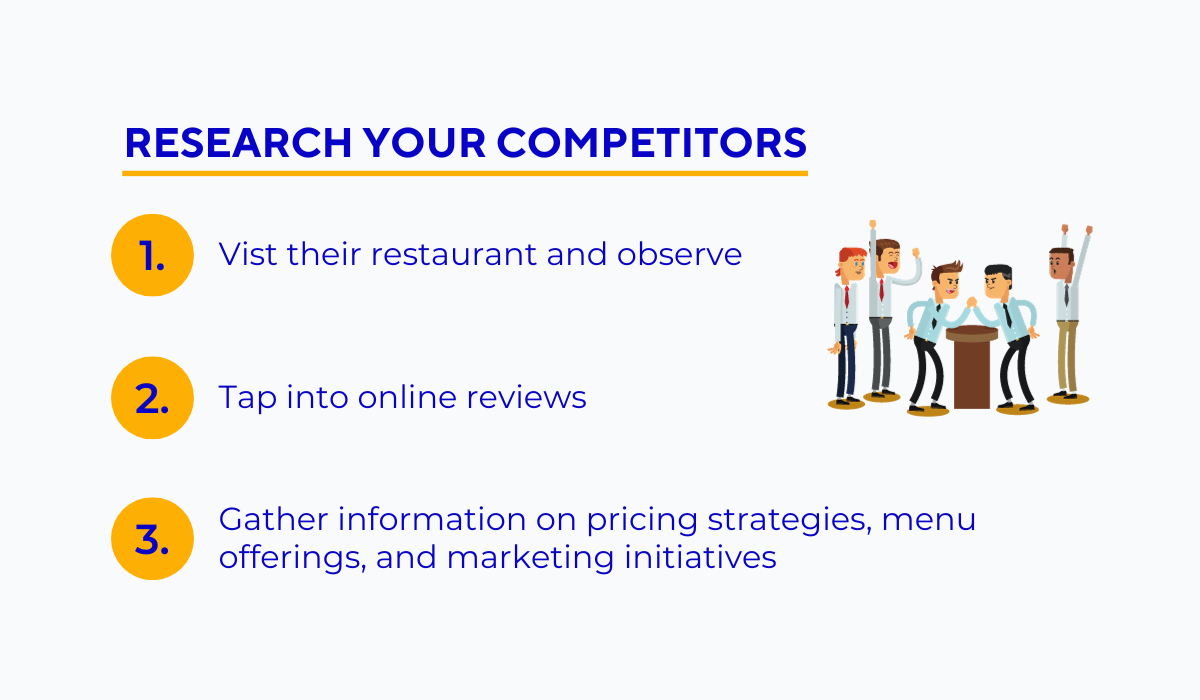
Source: Tablein
You can start by physically visiting your competitors' restaurants. Experience the ambiance, observe customer interactions, and take note of the overall vibe.
Think about what you do better, and highlight that in your marketing.
Simultaneously, explore their online presence—website and social media. As we mentioned above, social media listening tools will also help you in this area.
Again, the flaws you discover are your opportunity to shine (assuming you’re doing a better job in the same area).
Furthermore, check online reviews. Platforms like Yelp, Google, or Tripadvisor will give you important insights into what customers appreciate or criticize about your competitors.

Source: Tripadvisor
In the above case—offer vegan options if your neighboring restaurants don’t!
And make sure your target audience knows about it. That’s one strategic way to improve your revenue levels.
In the same vein, you can collect information on your competitors’ pricing strategies, menu offerings, and marketing initiatives.
However, the point here is not to copy your competitors but to understand the landscape.
- What's their unique selling proposition?
- What draws customers in?
This information will help you differentiate and find ways to elevate your own game.
When you collect all this information about your competitors, you can go a step further and construct a competitive analysis matrix. In essence, it means visualizing all the data you have on competitors.
There are several different types of competitive analysis matrices.
However, you can start with a simple comparison chart, like the one in the photo below.
There, you add information on pricing, menu variety, customer reviews, and promotional activities (yours and your competitors) side by side to grasp all the differences and similarities.
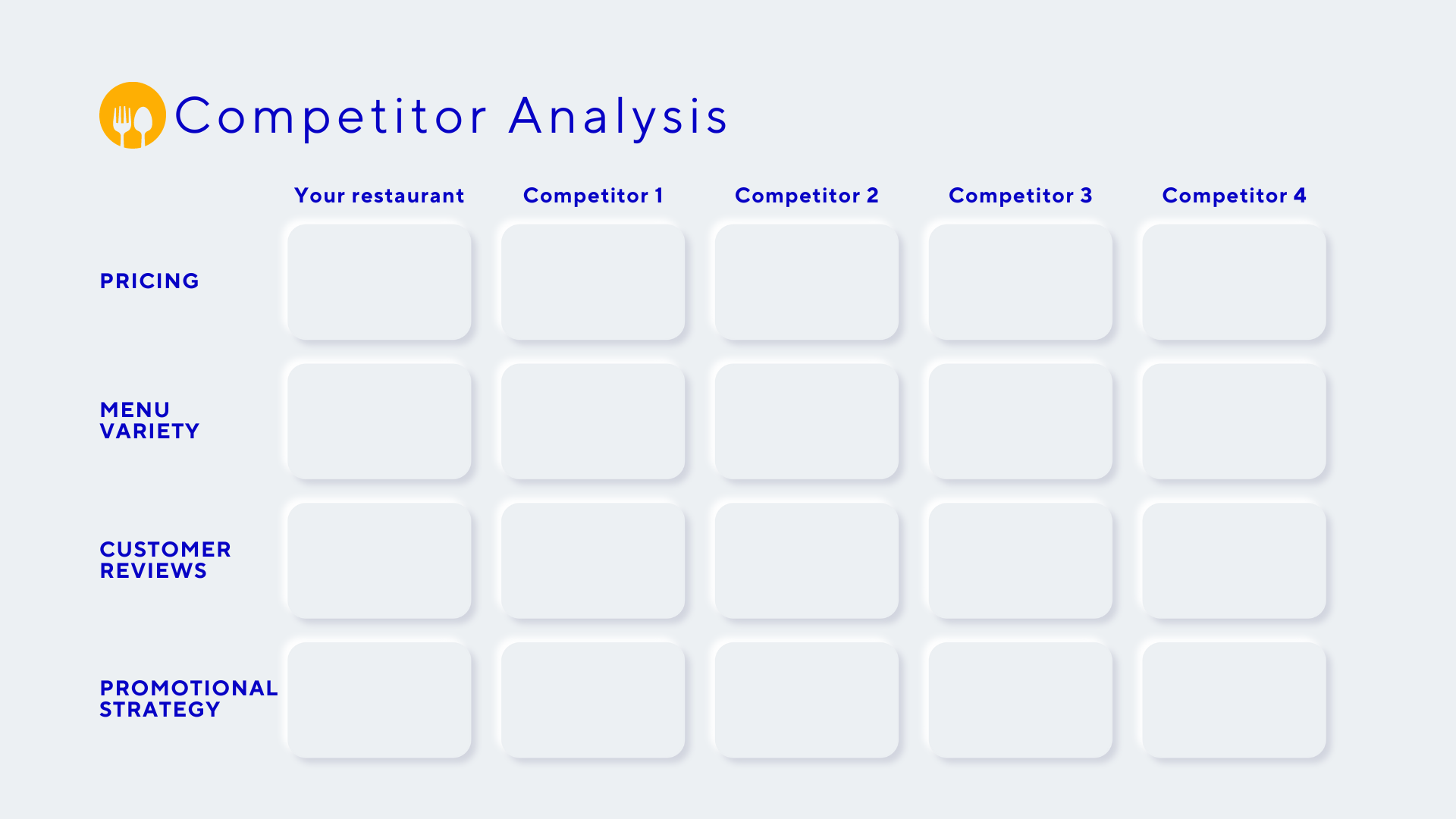
Source: Tablein
Keep this matrix dynamic and regularly update shifts in pricing, new menu additions, or updated promotions.
The living documents you create will undoubtedly contribute to your strategic decisions.
So, embrace the journey across the fence. Let the nuances of your competitors guide you toward a revenue management strategy that truly stands out and works for you.
Conclusion
And here you have it—these were the five steps on the journey to better revenue management.
Yes, the process may not be so simple, and it requires time and effort. But it's worth it.
Once you collect and analyze various data, you will be ready to shape the revenue management strategy that will work wonders for your restaurant.
Now, armed with newly gained insights, go ahead, collect that data, and leverage it to make your restaurant more profitable!
Get a 30-day Exclusive Trial
As a Tablein blog reader, you’re eligible for an exclusive 30-day free trial to experience our simple reservation solution for your restaurant.
Enter your business email, and we’ll send you all the steps needed to create your account.
Share this
You may also like

6 Tips for Effective Restaurant Revenue Management

The Ultimate Guide to Restaurant Table Turnover
